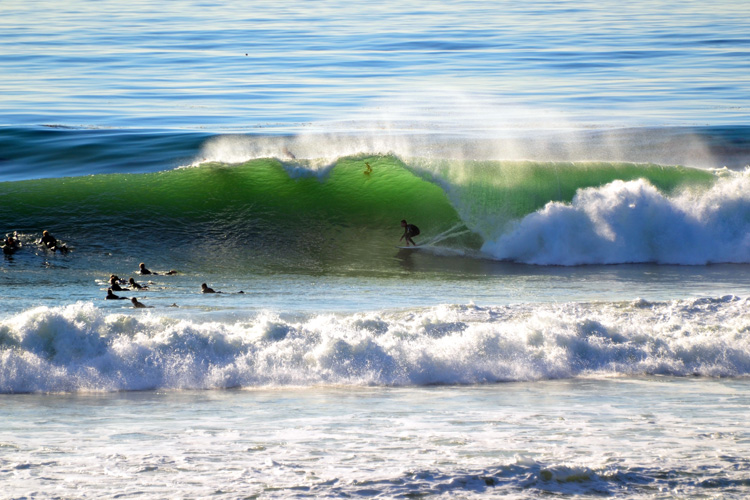How are the waves today? Learn the basics of a surf report, and take note of what to check to know if the surf is coming to you in the next few days.
The knowledge of the fundamental variables of surf forecasting is key to making good calls when it comes to choosing where and when to surf.
Many times, the difference between an average and an epic surf session is recognizable in a simple surf report. All we have to do is pay attention to the most relevant variables and make a wise decision.
What is a surf report? A surf report is a visual representation of the ocean and atmospheric conditions for a particular surf break at a given moment.
The weather data is presented to you in a chart or table with the size and intensity of waves and winds.
In other words, a surf report tells us how waves are breaking at a surf spot. It allows you to decide whether you're heading to spot X or break Y, even without looking at it.
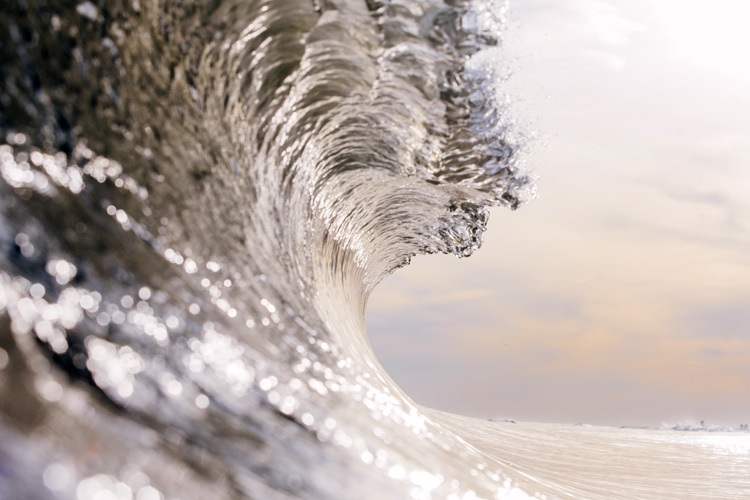
Intuitive and Accurate
Reading an online surf report is quite easy. It is often presented to you with visual and graphic charts or numeric tables.
All you have to do is browse your desired surf destination or nearby beach and get valuable hints on the consistency of the waves.
The surf forecast is what lies behind the surf report. Surf forecasts predict what a surf report will look like.
They result from a series of computational analyses that gather information from ocean buoy readings and weather satellites and transform it into an easily readable chart or animated color-coded maps.
In the end, in a matter of seconds, you'll understand how the waves will be tomorrow.
While you can say that live-streamed cameras replace the surf report, they cannot replace the future predictions developed by surf forecasts.
Modern surf forecasts are not 100 percent accurate, but they can anticipate with a reasonably high degree of confidence when and how the surf is coming, where it will hit best, and for how long it will last.
Although it is impossible to scientifically plan perfect surfing sessions, you may definitely increase the chances of finding excellent surf and maximizing your time in the water.
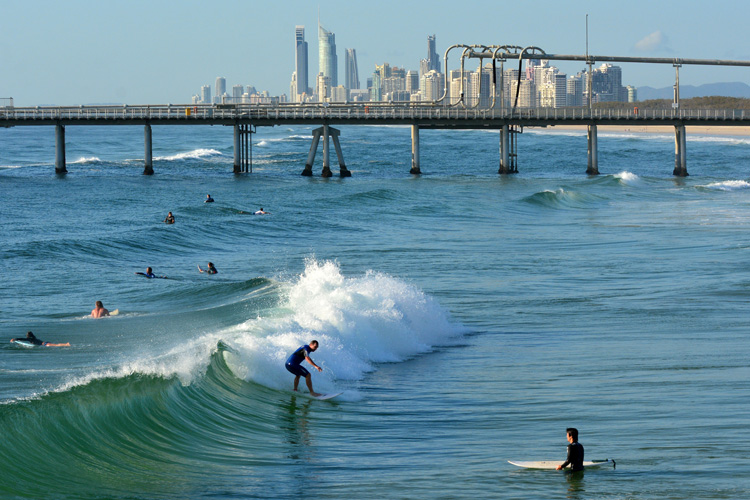
When and Where to Go
Surf forecasting is a science, but you don't need to be a scientist to get the information you need and have a good time in the water.
All you want is to know the size and period of the waves, the swell arrival times, wind behavior, and the tide times.
Armed with that data and with accumulated experience in observing and understanding the secrets of your favorite spots, you will make better decisions on whether to surf your home break or get in a car and travel a few miles to a more or less exposed surf peak.
One of the variables you should include in your surf report analysis is (concave/focusing or convex/defocusing) refraction.
Refraction is the bending of a wave as it propagates over different depths. Do you know how it affects your surf break?
For example, in point breaks like Bells Beach or Ericeira, the waves are defocused. Consequently, as they reach the coast and bend, they start to lose height but break perfectly down the line.
The same applies to another critical element - diffraction. Diffraction is a change in the intensity and direction of the waves after passing by an obstacle like a big rock, small islet, or landmark.
That's why you must adapt the information from surf reports and forecasts to your specific situation.
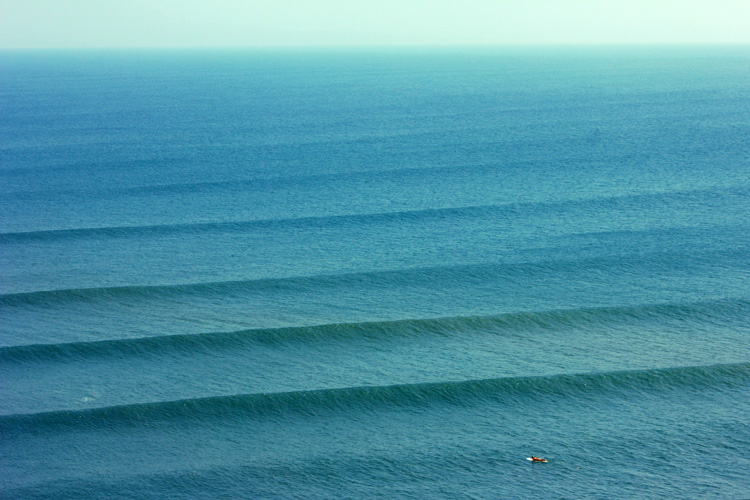
The Surf Report Variables
Today, there are dozens of highly reliable online surf report services and websites that basically cover the entire planet.
They also feature long-range surf forecasts, even though the quality of seven-day predictions is dramatically lower than that of 24-hour forecasts.
The fundamental elements of the surf report, or the essential factors of surf forecasting, are the following:
Wave Height
The size of the wave is one of the most important variables of a surf report.
So, the significant wave height reveals the average wave height - from trough to crest - of the highest one-third (1/3) of all waves during a 20-minute period.
Basically, it tells us what to expect when we're sitting out the back waiting for the sets.
Wave Period
Groundswells associated with long wave periods, typically 10-to-20 seconds, are known for bringing better and more powerful waves for surfing.
On the opposite side of the spectrum, wind swells with periods of less than 10 seconds will deliver poor-quality surf conditions.
Swell Direction
The direction from which the swell is coming can be expressed in degrees or cardinal points.
As a general rule of thumb, a coastline facing west will get bigger waves if the swell comes from W instead of NNW. That's why the angle of a swell is so important.
Wind Speed and Direction
The wind is responsible for creating waves, but it can also destroy a day of surfing even if a groundswell hits the shore.
In most cases, onshore winds will decrease the quality of the waves, while a gentle and steady offshore wind will hold the face of the wave for a little longer before breaking.
Moon Phases
The Moon's eight phases directly impact the Earth's tides.
When the moon is full or new, the high tides are dramatically high, and the low tides are extremely low because of the combined effect of the gravitational pull of the moon and sun.
They are called spring tides.
However, when the sun and moon are not aligned, i.e., during the moon's quarter phases, the differences between high and low tides are almost undetectable.
They are called neap tides.
Tide
High and low tides play an essential role in the formation of good surf.
Depending on the spots you surf, there will be moments when the tide is too low and the waves are closing out.
But you will also observe periods when the tide is too high, and the waves are breaking too close to the beach and cannot be surfed.
A Surf Report Example
Here's an example of the weather and ocean conditions for Sunset Beach, on the North Shore of Oahu, in Hawaii:
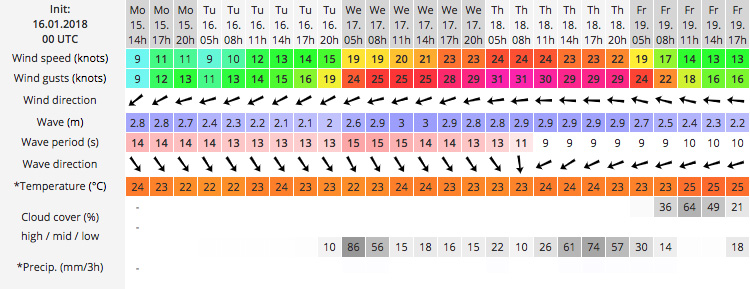
As you can see above, there are three main suggestions given by the numbers, colors, and arrows:
- The wind is relatively strong - above 10 knots - and peaks Thursday;
- A wave period of between 13 and 16 seconds indicates the potential presence of a groundswell that starts to lose energy Thursday at 8 am;
- An abrupt change in the wave direction by Thursday at 8 am tells us that the surfing conditions will change dramatically;
The more you're able to adapt and fine-tune the surf report readings to your surf spot, the better decisions you'll make.
The main factors that come into play are related to waves and wind. But you can step up your game to get more accurate results.
Advanced surf forecasting models allow us to improve the quality of the report.
For example, the introduction of bathymetric variables, atmospheric pressure, the temperature of air and water, precipitation, cloudiness, and humidity may help us understand better how the surf will look in the next hours and days.
Ultimately, the goal is to understand how wind and swell patterns will translate into good or bad waves or find the best ocean and weather conditions for surfing in a particular region.
